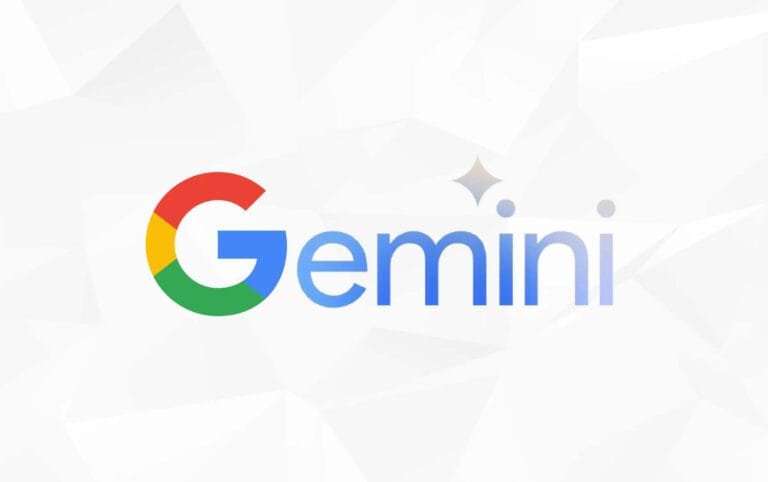Google is rolling out Gemini 2.5 Flash to the Gemini app, allowing users to experiment with the company’s latest model. It is considered a brighter and lighter replacement for 2.0 Flash and will initially be available in preview form. At the same time, API users will have to spend less than they would be on competing models as Google ramps up the rivalry with OpenAI and Anthropic.
Although Google’s Gemini (formerly Bard) got off to a slow start back in 2023, it has made a strong comeback by now, in early to mid-2025. In addition to impressive results, the release schedule is relentless. A new model appears in the Gemini app or development tools such as AI Studio almost on a weekly basis. The latest addition is the faster and more efficient Gemini 2.5 Flash model, which is still in preview.
A jumble of models
The drop-down menu for model selection in the Gemini app is becoming increasingly complex, a luxury problem that OpenAI’s ChatGPT also suffers from. Google releases so many preview models and new ways to use Gemini that it can be challenging to know which option is right for which task.
Tip: OpenAI launches o3 and o4-mini
Tulsee Doshi, director of product management for Gemini at Google and leader of the team building these models, told Ars Technica that she prefers the more powerful option, Gemini 2.5 Pro. She says this model is particularly helpful to her when it comes to writing assistance.
The new Flash model is significantly smaller than Gemini 2.5 Pro and about the same size as 2.0 Flash, but should perform better. Doshi calls it a “major improvement” over 2.0 Flash. In any case, Gemini 2.5 Flash will not cause any additional app confusion, as it will be listed as 2.5 Flash (Experimental) in the app and on the website, replacing the 2.0 Thinking (Experimental) option.
Reasoning when necessary
Like all models in the 2.5 branch and beyond, Gemini 2.5 has built-in simulated reasoning, referred to by Google as “thinking.” This means that the model checks its facts during generation, resulting in more accurate output. However, this also makes the models slower and significantly more expensive. Since not all questions require this level of continuous analysis, Google has equipped Flash with tools that allow developers to tune the model to their specific use case.
The fact that the 2.0 thinking model never made it past the experimental phase underscores how fast Google’s Gemini team is moving these days. In addition, the new model thinks “dynamically,” depending on the input prompt it receives. This is a similar approach to Claude 3.7 Sonnet, which also does not have an explicit reasoning step. CEO Dario Amodei of creator Anthropic characterizes this as a “spectrum” within which LLMs reason in varying degrees. This dynamic nature saves a lot of unnecessary computing power, as longer reasoning requires more computing power during AI inference.
Easier to use
Returning to Flash 2.5: unlike the 2.0 Thinking model, the new model will directly support Google’s Canvas feature for working on text or code. According to a Google spokesperson, support for “deep research” with this model will follow later.
Gemini 2.5 Pro will remain available and is also still in the experimental phase, leaving 2.0 Flash as the only non-experimental chatbot. That model does not have reasoning capabilities (or is at the far left of Amodei’s reasoning spectrum, if you will, assuming something like o3 is on the right).
Like 2.5 Pro, this model supports Dynamic Thinking, which can automatically adjust the amount of work required to generate an output based on the complexity of the input. The new Flash model goes further by giving developers control over the “thinking” process. According to Doshi, Google is now launching the model in preview to get feedback from developers on where the model meets their expectations and where it under- or over-thinks, so they can continue to iterate on the dynamic thinking functionality.
Gemini 2.5 Flash allows developers to set a token limit for ‘thinking’ or disable this functionality entirely. Google has announced prices of $0.15 per million tokens for input, while output comes in two variants. Without ‘thinking’, output costs $0.60, but with ‘thinking’ enabled, this rises to $3.50. The ‘thinking budget’ option allows developers to fine-tune the model to their needs at a price they are willing to pay. According to Doshi, you can actually see the improvements in reasoning in benchmarks as you add more token budget.
For developers
Google began gauging developer interest in Gemini 2.5 Flash earlier this month. Although the model is not yet fully finalized, Google has decided to make it fully available in Vertex AI and AI Studio with variable API pricing.
With the rapid pace of releases, a final version of Gemini 2.5 doesn’t seem that far off. Google hasn’t announced any specific details yet, but with the new developer options and availability in the Gemini app, Doshi says the team hopes to make the 2.5 family generally available soon.
Read also: Google makes Gemini 2.5 Pro free (update)
